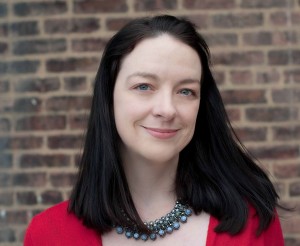 For the better part of the last decade, I’ve worked as an education advocate in Hunts Point, an isolated community in the south Bronx. As many New Yorkers know, Hunts Point is consistently cited as the most at-risk neighborhood for children in the city based on low education attainment, record joblessness, housing conditions, health outcomes and other factors. Over 59 percent of the children in the community live in poverty.
For the better part of the last decade, I’ve worked as an education advocate in Hunts Point, an isolated community in the south Bronx. As many New Yorkers know, Hunts Point is consistently cited as the most at-risk neighborhood for children in the city based on low education attainment, record joblessness, housing conditions, health outcomes and other factors. Over 59 percent of the children in the community live in poverty.
Despite the difficult environment, we work with students to prepare them for success in high school, in college and beyond. Recently, a colleague wondered aloud: What is the difference for students who are able to move beyond the neighborhood legacy of low high school graduation rates and poverty?
I believe that the primary difference is the connection to people like him — youth development professionals, teachers, parents, caregivers and grandparents. The difference is a relationship with a supportive adult. Research stretching back close to 20 years has identified the support of a caring adult as a strong protective factor contributing to resilience in at-risk students. As youth advocates have always known: Every child needs a champion.
The presence of a caring adult in any child’s life is often pivotal: the undivided attention they offer, the experiences they share, the reassurance they can give as a child becomes a teenager and begins to explore the larger world. Becoming an adult requires that we take risks and make mistakes. It is only by making mistakes that we learn to assume responsibility for our actions, to ask forgiveness and begin to understand our relationship to others.
For children growing up without strong support systems to help them navigate the highs and lows of adolescence, often it is the staff and supporters of community organizations that connect students to, and in many cases become, that caring adult.
The role is particularly important in high-risk neighborhoods because, too frequently, risky behavior and misconduct is either ignored entirely or addressed with undue severity. This all-or-nothing approach yields predictable and unfortunate results.
When harmful behavior is not addressed quickly and correctly, it is likely to be repeated and worsen. Conversely, overly punitive treatment of first-time infractions can have lasting consequences or set off a chain of negative events.
For many of the adolescents we work with, there is no middle ground to make choices — both good and bad — and understand their ramifications. For the high-achieving high school student who loses the chance for a potential college scholarship because he gave in to peer pressure and attended a party, the middle school student arrested for petty shoplifting who spends the night in police custody because there is no adult able to pick them up or the eighth-grader who, because of inappropriate social media use, is barred from an enrichment program that feeds her curiosity and self-esteem, the lesson learned is that the world is a harsh and arbitrary place.
It is in the relative safety of the middle ground that adolescents can experience appropriate consequences for their actions, and as a result, can grow as individuals, learn perseverance and become thoughtful adults ready for greater challenges ahead.
As youth and educational advocates, I believe we need to widen the path — provide that necessary middle ground — for the students we work with in the at-risk communities we serve. That means two things. First, in our daily interactions, we must ensure that students and families have access to the social-emotional and relationship-building skills that make the difference in difficult situations. It also means addressing students’ mistakes with fairness, appropriate consequences and forgiveness.
Secondly, we need to advocate widely and loudly for system changes that focus on letting youthful mistakes become learning opportunities rather than negatively change the trajectory of a child’s life. We must vocally support policy changes that recognize that children are just that.
Some examples include the New York state juvenile justice reform, Close to Home, that recognizes that children need appropriate, supportive interventions that address misconduct; the revised 2015 New York City School Discipline code that incorporates principles of restorative justice; and lastly, the continued advocacy effort to raise the age of adult criminal responsibility to 18, in line with 48 other states.
But most important of all, we must continue to connect our students with caring adults who are willing to make an investment of themselves in a child’s future.
Jill Roche, Esq. is the chief strategy director at The Hunts Point Alliance for Children, which brings together 16 schools and nonprofit organizations committed to supporting children and families in Hunts Point.


























